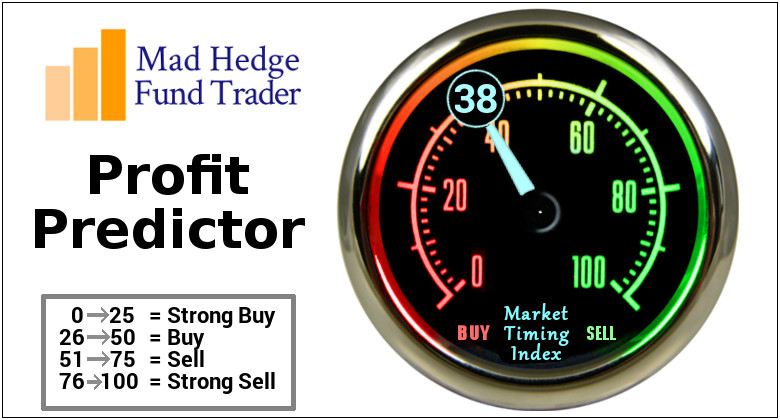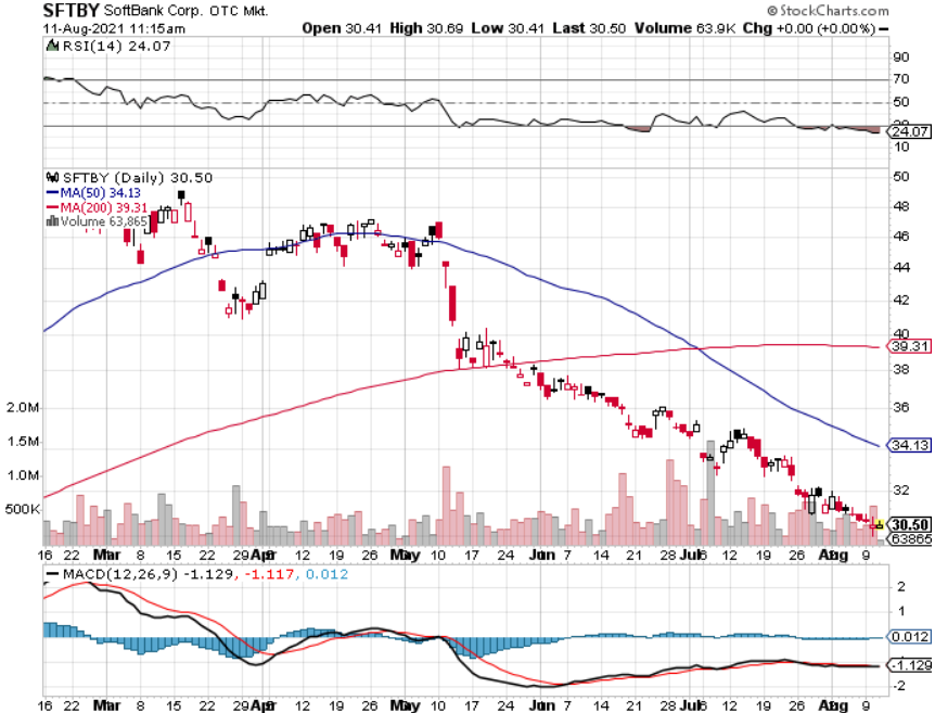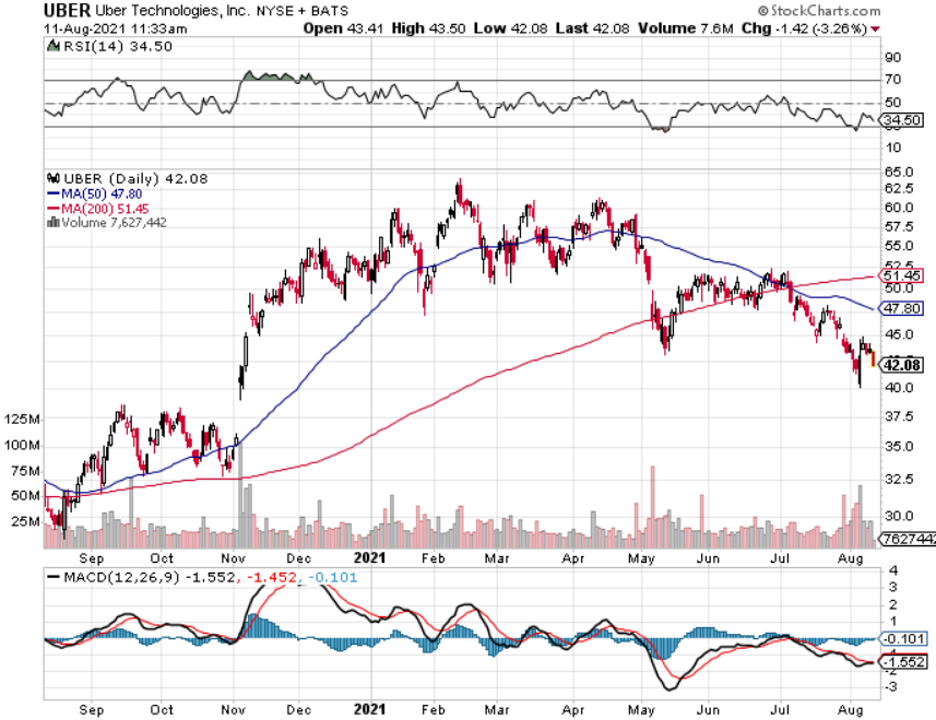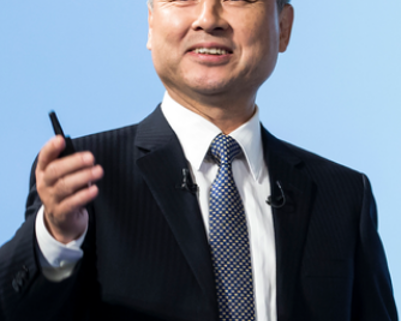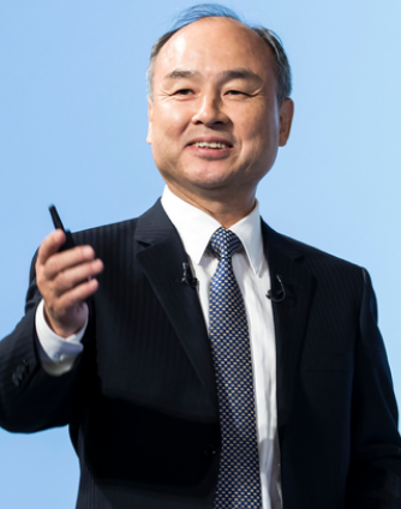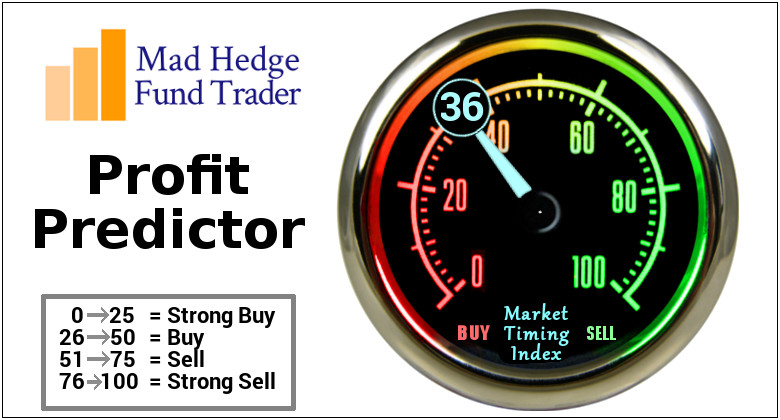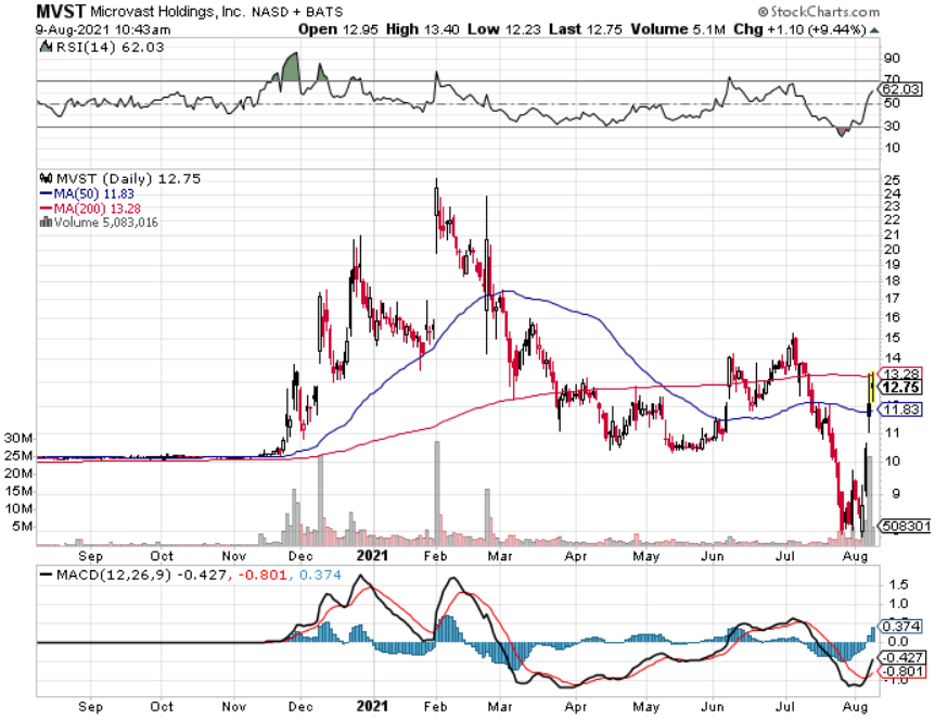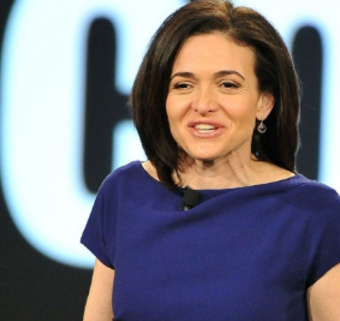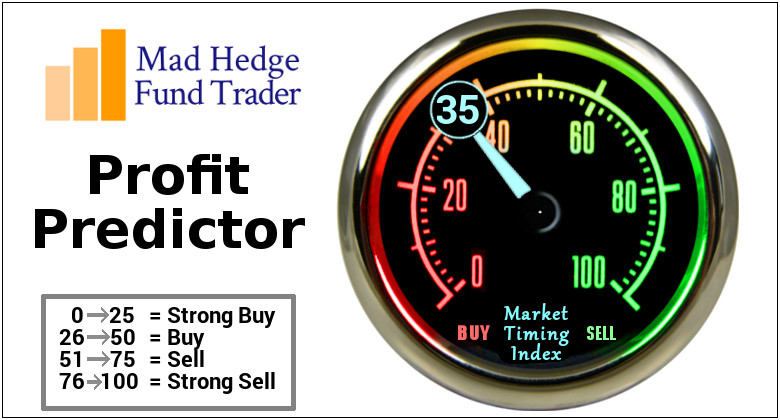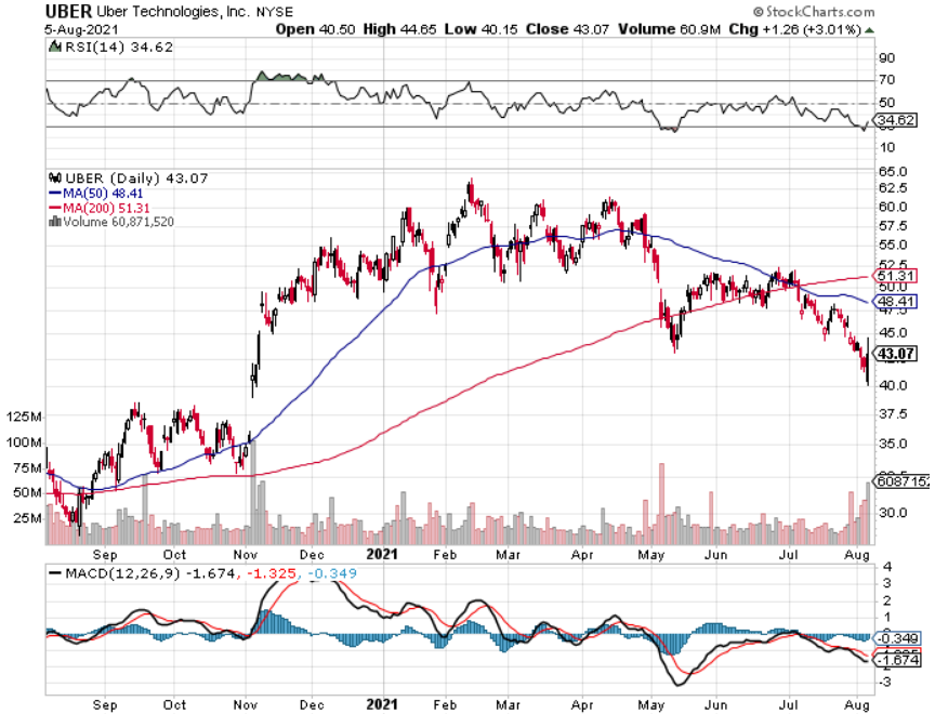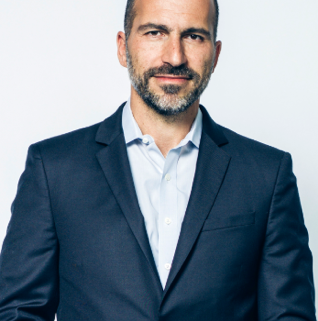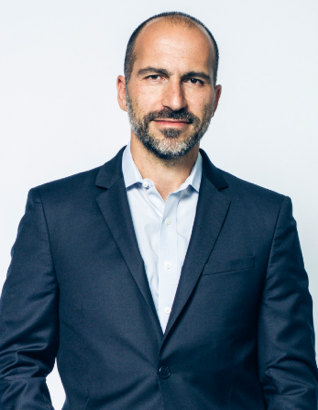“A founder is not a job, it's a role, an attitude.” – Said Founder and CEO of Twitter and Square Jack Dorsey
Mad Hedge Technology Letter
August 11, 2021
Fiat Lux
Featured Trade:
(HIGHER HIGHS FOR THE NASDAQ?)
(UBER), (DIDI), (BABA), (COIN), (HOOD), (SFTBY)
The blowback from the Chinese tech crackdown has been quite tough to take for Softbank (SFTBY) because of the decision to maneuver deeply into Chinese tech shares.
It looked good at the time, as China was the center of every Wall Street analyst’s growth proposition short and long term.
However, troubles in China crystallize the massive shift of deglobalization and many investment funds are finding a new world as we turn the page.
Gone are the days when aggressive investors could just dabble in all sorts of exotic markets believing that globalized forces would be a wind at its back.
So much so that nobody ever batted an eye if you told them you had investment theses playing out in Mongolia or Brazil.
Emerging markets are blowing up and now even the passport with which you do business has never been more prominent.
Rich countries are going the way of Europe – that of intense and mind-numbing regulation to make up for a shortage of tax revenues to pay for these costly programs.
The global canary in the coal mine can be traced back to Alibaba’s founder Jack Ma effectively being muzzled by the Chinese Communist Party. This was the nail in the coffin for the China story as it relates to foreign money waterfalling in the Middle Kingdom.
That’s the end of it.
Softbank will need to go back to the drawing board and probably pluck China off the board as top dog and reset their draft board.
The pain is now being found in Softbank’s balance sheet with net profit down 40%.
Let’s look at some of Softbank’s investments which include Chinese e-commerce giant Alibaba (BABA), car-share giant Didi Global (DIDI), and short-video app TikTok owner ByteDance Ltd.
Around 35%-40% of Softbank’s investments are tied up in China and its net profit is down to 761.5 billion yen, equivalent to $6.9 billion.
The incremental buyer has dried up and Softbank is now saddled with an illiquid Chinese tech portfolio they can’t get rid of.
Softbank founder Mr. Son said that SoftBank’s shares have fallen so low that the price is now only around half of the value of the company’s assets, after subtracting debt. Given that discount, SoftBank will unveil more share buybacks at some point, and is now discussing the timing and size.
He also said that SoftBank will continue the furious pace of investment at Vision Fund 2, which has stakes in 161 companies and has been funding startups at a rate of nearly one per day in recent months.
SoftBank’s new investment in pharmaceutical company Roche Holding AG signals that the Japanese company might resort to safer stocks with stable free cash flow.
Compounding the situation might be that Softbank feels that they have been burnt by tech investment one time too many.
The ripple effect of China tech going down affects their assets as a whole and have concluded that the balance sheet needs trimming and re-upping.
Even if Softbank can find some balance sheet rejuvenation - they no longer feel they can take these extraordinary tech risks that achieve high beta which is required to satisfy investors.
Overall, we could be dealing with a dearth of real, legitimate tech opportunities in proven business models which could be a reason for Softbank rotating into sectors like pharmaceuticals.
No doubt I believe they will keep their eye out for tech opportunities, but they aren’t set on it from the beginning like the past 2 decades.
Or perhaps, this could be the segue into riskier investments than before - remember Uber (UBER) was a company that no VC wanted to touch with a 10-feet pole and Softbank took it on and made a lot of money. but where is the next Uber after Uber?
It's possible that there are no real, transformative companies in the pipeline after the Coinbase (COIN), Robinhood (HOOD) IPOs, these investments usually take 10-20 years to take profits from the initial seed funding.
It could also signal further advancements into the derivatives market with the company looking for leverage bets instead of holding vanilla equities and standard ETF index funds.
Their foray into derivate exposure gave them the nickname the “Nasdaq whale” when the company bought a torrent of call options profiting in the billions from the tech lurch up.
Even retail traders have gotten into options with their profit possibilities which are able to surpass any equity trade that only have a 2:1 leverage ratio.
Softbank could be finding tech too overvalued and looking to jump short-term into another industry almost like a day trader, although tech, for them, is something that is a long-term core objective.
We can analyze this whichever way we want but its meaning is clear – the low hanging tech fruit is gone, and it will be harder to fight for your crust of bread even much so that the Nasdaq whale is looking into morphing into the S&P whale or a different type of whale all together.
I can tell you that deep down in the weeds as a trader, I am seeing a rapidly evolving rotation that has rewarded cyclicals that are back from the dead and financials that are breaking out benefiting from the massive amount of stimulus deposits.
We need to acknowledge that the consumer is currently in the best health of our lifetime because of the free payouts, PPP loan forgiveness, and other goodies. And that doesn’t necessarily mean that tech will go up in the short-term as we skim all-time highs.
Technical charts still look positive for tech, but it is true that the sector has cooled off even if the trend will be higher long-term. It’s getting that much harder to eke out higher highs in the Nasdaq.
“Don't chase a girl, let the girl chase you.” – Said Founder and CEO of Softbank Masayoshi Son
Mad Hedge Technology Letter
August 9, 2021
Fiat Lux
Featured Trade:
(WHAT’S HOT IN MEME MANIA)
(MVST), (DAN), (OSK)
Culturally and in Washington, there’s massive momentum to electrify America’s car fleet, offering a thesis for readers to back emerging battery makers.
With the flood of liquidity out there, it’s almost a "when" and not "if" situation to when investors are going to support the next nascent tech trend.
This environment of chasing higher yields has largely diminished the attractiveness of bonds to institutional investors forcing them to resort elsewhere to get their returns.
I don’t want to demean smaller start-up technologies but many out there are rated as pump and dump opportunities that recently have given way to you-only-live-once (YOLO) behavior that distorts the trading market even more.
This is what gave rise to meme stocks which could be described as a forum-based community that often would post ideas of stocks that haven’t done anything in years, only for a group to communally throw money at a dead business to engineer a short squeeze.
Many can imagine that if timed late, 90% losses on trades became common.
Granted, this can’t be done to mammoth companies like the FANGs simply because the trading volume is too gargantuan for any army of trolls to be able to move the needle.
But smaller stocks are fair game and that is exactly what we have seen.
Another of these meme ideas that have flooded internet chatter the past week is Microvast Holdings (MVST) which makes batteries.
It’s a vertically integrated battery manufacturer, producing its own cathode, anode, electrolyte, and separator.
Microvast’s Lithium Titanate Oxide (LTO) cells are currently Microvast’s star product. Crucially, these cells can be fully charged in 10 minutes and provide an energy density of 180 Wh/l or 95 Wh/kg. These LTO batteries retain over 90% of capacity even after 10,300 full charge/discharge cycles.
Microvast is working on solid-state batteries where the aim is to manufacture cells with energy densities of over 1000 Wh/l. They also boast a clear manufacturing advantage, with plans to increase its annual battery manufacturing capacity to 11 GWh by 2025.
The electric battery industry is about to make a killing and U.S. President Joe Biden was lately promoting a goal to have 50% of all cars sold in America emission-free by 2030.
The President is adamant the future is electric.
Batteries will need to be part of this equation.
Microvast is not on the radar of most investors. That’s fine. The company is puny. It is also a special purpose acquisition company.
MVST’s market cap is $4 billion and they had a quarterly EPS growth rate of -120%. They only do about $100 million of revenue per year so I am definitely not vouching for this company as a convincing buy and hold long term.
There still needs a lot of convincing to happen first with better earnings reports in the future.
The SPAC came public in February via a blank check merger with Tuscan Holdings Corp. That deal valued the business at $3 billion. Shares ran up to $25.20 in early February only to later collapse to $7.83.
The stock is compelling now because the narrative is improving dramatically.
Electric vehicles are here to stay, and the prospect of future revenues is what usually forces stock prices higher.
Biden will do everything in his power to get more EVs on America’s roadways.
Most of the batteries Microvast currently makes end up in commercial vehicles like buses, mining trucks, and taxis.
The company is vertically integrated with proprietary technology across all of the key battery components.
It also has full high-volume production facilities in China, and longstanding commercial and research relationships with businesses like Porsche Motorsport, Dana (DAN), and Oshkosh (OSK).
The reason for the big drop in Microvast was when an analyst put out a $6 stock price target based on the company’s “enhanced execution, competitive, and in-sourcing risks."
The stock cratered to lower than $8 but has since been picked up by the meme stock army ready to make their mark in this name and the last few trading days the stock has had continually produced daily return of over 10%.
The stock is now over $12 and if any reader wants to take a flier on an incredibly volatile, speculative electric battery company, the momentum is now at your back for a trade.
As we have seen with meme stocks AMC and GameStop, don’t count out a meme short squeeze and its potency because although highly speculative, profits are to be had if you buy the pump before the dump.
“If you're offered a seat on a rocket ship, don't ask what seat.”- Said Chief Operating Officer of Facebook Sheryl Sandberg
Mad Hedge Technology Letter
August 6, 2021
Fiat Lux
Featured Trade:
(IS IT TIME TO GET BACK INTO UBER?)
(UBER)
I dig it that Uber has larger data sets than anyone else in a world where bigger is better in terms of data.
What they have is ultimately uber valuable in the modern day of data being the new oil.
This advantage is precisely why Uber is able to train an in-house algorithm better than the next guy.
Global reference points are what every company these days lust for.
Matching and routing an incentives marketing engine that is highly personalized is an existential issue for ride-sharing giant Uber.
When you parlay their data edge with possessing op teams on the ground in every single market and understanding of the regulatory marketplace as well, it means per unit, Uber’s overheads are way lighter than competitors.
It all translates into cost of customer acquisition being lower and a higher lifetime value because of the higher frequency accounts that they have with customers.
You could almost say that in this particular industry, it’s a game of who can outdo one another in customer acquisition unit cost.
Beating on cost is a must because Uber has all these unprofitable businesses and when it comes down to it, they are a glorified delivery driving service.
They must acquire to scale out because that’s the only hope they have to become profitable by wielding the economies of scale advantage.
Uber’s Grocery division is off to a great start internationally and at home in the U.S., Instacart is a strong competitor.
So I do believe they face a steep uphill climb to get anywhere near Instacart who has had skin in the game forever.
But when we get into the weeds, Uber’s short-term direction will clearly be driven by the supply of drivers or the lack of them for a reasonable price.
In July, new driver additions on Uber in the U.S. grew 30% month-over-month. That's right, 30% month-over-month even as they pulled back on incentives and improved margins. As investments taper, Uber expect mobility to show strong leverage in the back half.
Management tried to gloss up results but Uber had spent a massive $250m in driver incentive investment in the second quarter, which increased losses at its ride-hail business.
I mentioned at the top that Uber’s model is about low-quality tech married with scale, thus, there’s no way to justify spending $250m in one quarter to find drivers.
The dearth of drivers came about because of incremental government stimulus, lack of child care services, unemployment subsidies, even preventative virus concerns, or simply some drivers just died of corona.
Not only is data the oil for Uber, but in that oil, one massively important input is the cost of acquiring drivers.
For management to be so behind the curve on this one shows a degree of unpreparedness.
Granted, it’s been quite difficult for any tech management to get a hold of the new tech trends post-pandemic, but that’s what they are paid to do.
Shares of Uber have tanked around 30% since mid-February this year speaking volumes to management lack of execution in supplying the volume of drivers.
I know it’s not a simple one-day smash and grab to get drivers.
We are talking about marketing, onboard costs, background checks, vaccinations, promotions, registration process and education.
This isn’t all free.
I would hope that as we approach 2022, those costs become less of a burden.
But it does go to show that for Uber, the honeymoon period is long gone and even the low-hanging fruit area doesn’t exist anymore.
We seem to have entered a phase of chronic underperformance met with a finite period of overperformance the only to shift backwards again and repeat the same cycle over again.
As we look at the rest of 2021, the driver acquisition marketplace is unhealthy and wait times are up big causing surge pricing to make Uber a pricy service.
I don’t see that moving significantly down by end of 2021, but this specific headwind will moderate which is good for the stock.
A little bit more regionally, a bunch of cities, southern cities are actually back to normal and it’s about putting dollars in front of drivers and the top 20 cities, drivers for mobility are making over $40 an active hour, including just earnings and tips as well.
I will tell you - this company has no chance to become profitable if they are doling out a median wage of $40 per hour.
It’s a fool’s game.
Even if you want to get “leaner”, I don’t see where the cost savings will come from unless they want to gut the corporate staff or cut back on the technology.
That’s not to say they will even be able to retain drivers who might get better offers in different industries and never consider driving an Uber again.
I mean honestly, being an Uber driver isn’t exactly a desirable job for most people unless you have no skills or no better options.
Everyone wants to work at home from a desk and computer where they can brew their own coffee and not commute. Being a driver is a job where you are in perpetual commute!
And if less skilled workers are being paid to stay home with an eviction moratorium so they don’t have to pay rent or a mortgage forbearance, so they don’t need to leave home, then it’s gotten so bad that Uber is paying $40 per hour to move the needle.
Regional cities have recovered but driver supply problem is acute in major cities like New York, San Francisco and L.A. with demand continuing to outplay supply and prices and wait times remain above comfort levels.
When this happens, customers stop using your service and for a company that relies on high volume, it couldn’t be more than terrible.
It means Uber doesn’t get paid when people are clamoring for their service.
I just don’t see Uber going into other markets and burning more cash to stay relevant because they are too mature of a company.
They are running out of gunpowder in 2021 and will expect to pump out the profits soon.
To profit means outperformance and Uber hasn’t delivered more than the dead cat bounce of the economy reopening which is a little pitiful.
I made a bullish call earlier this year which was correct at the time but then Uber hit a wall at $65 and has come back down with vengeance.
I can say that at $43 today, the stock will rise if Uber’s management can trim the $40 per hour they are paying drivers today while increasing driver headcount by 30% quarter over quarter.
I believe Uber’s management will be successful at bringing down driver costs.
It’s easy to see how they go down from here, and I do believe that the bad news is priced into Uber shares, and that many of these headwinds were transitory and the outlook will improve moving into 2022.
Even though I forecast the stock going up in the short to midterm, I still believe at some point, the company will need to come to terms with having no cutting-edge technology and no moat around its business model.
That issue has been lying dormant but that doesn’t mean it has gone away.
Just think about it, if Amazon or Google wanted to do what Uber does, they could figure it out in months, but they don’t see any value in this profit model.
Uber is definitely on the clock and that’s not a good thing for their management.
“Desperation sometimes drives innovation.” – Said CEO of Uber Dara Khosrowshahi
Legal Disclaimer
There is a very high degree of risk involved in trading. Past results are not indicative of future returns. MadHedgeFundTrader.com and all individuals affiliated with this site assume no responsibilities for your trading and investment results. The indicators, strategies, columns, articles and all other features are for educational purposes only and should not be construed as investment advice. Information for futures trading observations are obtained from sources believed to be reliable, but we do not warrant its completeness or accuracy, or warrant any results from the use of the information. Your use of the trading observations is entirely at your own risk and it is your sole responsibility to evaluate the accuracy, completeness and usefulness of the information. You must assess the risk of any trade with your broker and make your own independent decisions regarding any securities mentioned herein. Affiliates of MadHedgeFundTrader.com may have a position or effect transactions in the securities described herein (or options thereon) and/or otherwise employ trading strategies that may be consistent or inconsistent with the provided strategies.



